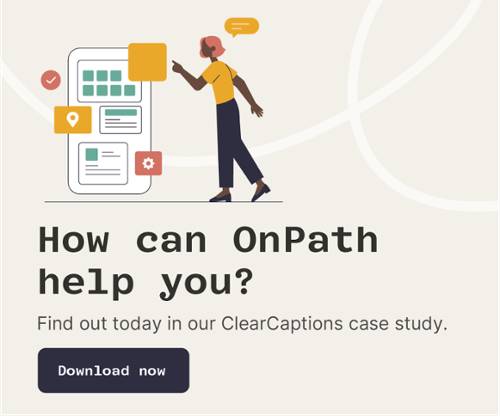‘Most CIOs now value testing more than ever before, and the onward march towards digitization is ensuring that customer experience and quality are of the utmost importance.’ - Capgemini’s World Quality Report (WQR) 2021-22
While functional testing is essential for faultless go-lives and business assurance, it’s also fundamental for creating a positive end-user experience.
Indeed, 61 percent of organizations cite ‘ensuring end-user satisfaction and customer experience’ as their top QA and testing objective. And it’s no wonder. Your end-users are the beating heart of your software; they bring it to life. As such, their needs should guide your functional testing implementation.
If your testing doesn’t align with your customers (or you’re uncertain), don’t worry. We’ve listed three tips to get you on the right path.
Map your personas
Persona mapping should happen long before any testing begins. But, as it’s a critical prerequisite, we can’t leave it off this blog!
When creating your personas, consider who your buyers and users are. Beyond demographics, write down their unique desires and frustrations. These will differ for each diverse persona. For example, an older user might find it more difficult to navigate a website menu than a younger user, and a hard of hearing person will probably struggle to enjoy a video or audio feature without captions.
To help map your personas, we recommend reading through our in-depth blog on the matter.
Consider the user during functional testing
Once you’ve identified your personas and fleshed out their unique goals, problems and demographics, you can refer to that knowledge throughout your functional testing.
While there are many types of functional testing, we’re going to split this section into two broad approaches: granular and scenario-based testing.
Granular function tests
What are you working on in your current sprint? Does it affect your various end-users? If so, how? These are the questions you must ask yourself both in the present moment and when planning future sprints.
Detailed functional tests should look in-depth at each individual function of your software, application or website. Let’s take the ubiquitous login page as an example.
A user could log into a portal in a number of ways. They might get their username and password right the first time, or they fail or have forgotten their login info. In some instances, they may need to reset their password, pass a biometric test, or answer security questions before they can enter their account. For each of these cases, you’ll have to consider potential end-user handicaps, the various devices they might be accessing your application, and even the situations they are using your software alongside the functionality of the feature.
Scenario-based testing
For scenario-based testing, you’ll want to evaluate potential user journeys and string together your tests accordingly.
One scenario might be a straightforward purchase. The steps of this journey could be:
- End-user logs in
- End-user views a product
- End-user expands product description
- End-user adds the product to their basket
- End-user checkouts and purchases
- Thank you page is displayed
Scenario-based testing requires you to consider the thought patterns behind your personas and ensure functionality for each unique path.
Assess other software tests
Of course, your end-users should inform *all* types of software testing beyond functional tests.
Your industry, software and personas will dictate the unique requirements. Here are three types of testing you might need to keep in mind:
1. Usability testing
You want your customers to succeed. That should always be your highest mandate.
But in order for them to succeed, you need to make the user experience as seamless and straightforward as possible. This is where usability testing comes in.
You need to ask yourself how intuitive your software is. Does each function make sense? And will your users understand how to use them? If your audience is unable to figure out how to purchase a product, or your website doesn’t load quickly on mobile, you’re doing something wrong.
2. Accessibility testing
Certain organizations, such as those working at the government level or within the education sector, must adhere to accessibility requirements. The Rehabilitation Act of 1973, for instance, dictates that activities funded by Federal agencies must establish and maintain accessibility across ICT.
In cases such as these, you’ll require compliance testing that determines whether your software meets legal requirements. Your personas for this may be people who are hard of hearing or have sight loss. In which case, you’ll need to test the accessibility features of your software, such as color contrast and image alt text.
3. Security testing
A poor security posture could not only put your data at risk but your reputation and customer satisfaction rates, too. One rupture in your software, and you could cause a wave of damage.
Security testing and vulnerability detection are vital for ensuring end-user safety. But you’ll also need to balance it with functionality, usability, and accessibility. According to McKinsey:
‘When designing the secure journey, organizations will have to make trade-offs between security and the customer experience. If they achieve the right balance, users will be offered a seamless journey—creating greater business opportunity—while the risk from exploitative attackers will fall significantly.’
QA from the user’s perspective
Almost 90 percent of service leaders say their quality assurance rarely matches up to their customer’s perception of ‘quality’, according to Gartner.
This indicates an obvious gap between QA testing and end-user goals.
To align your efforts, it’s essential to map your personas and consider their unique pain points, needs and abilities. Through informed granular and scenario-based functional testing - as well as other software tests - you’ll ensure your software not only works, but works well for the right audience.




